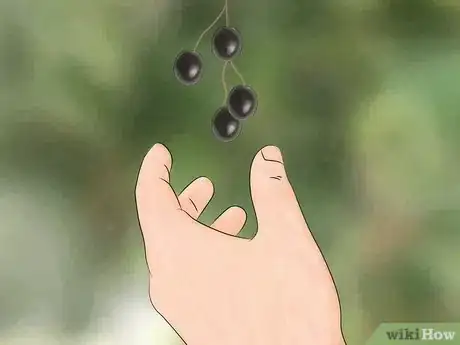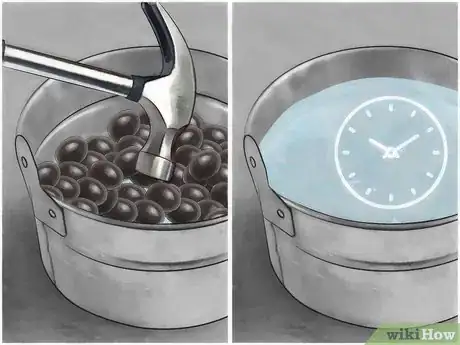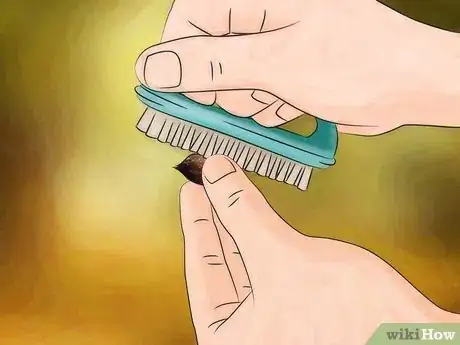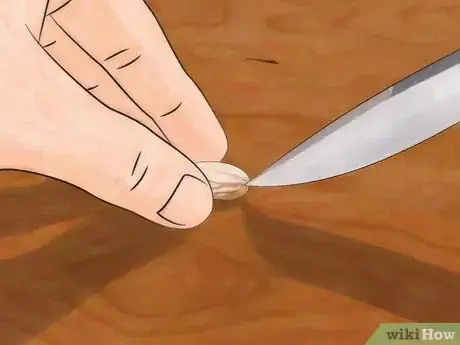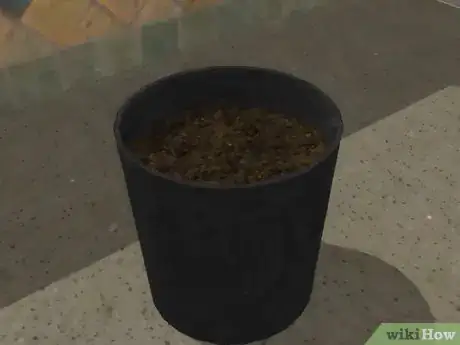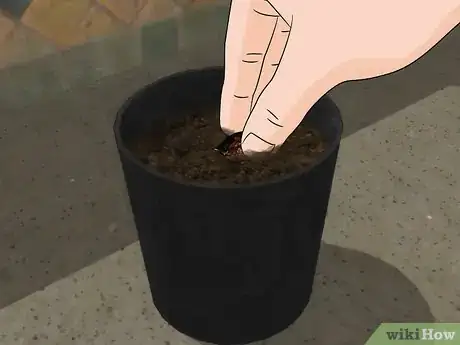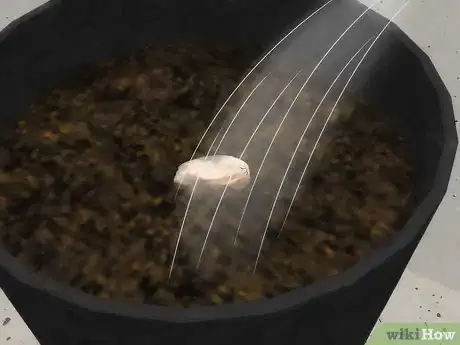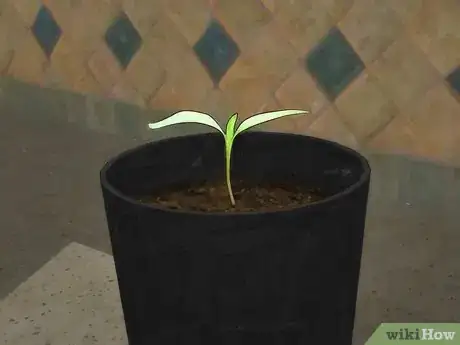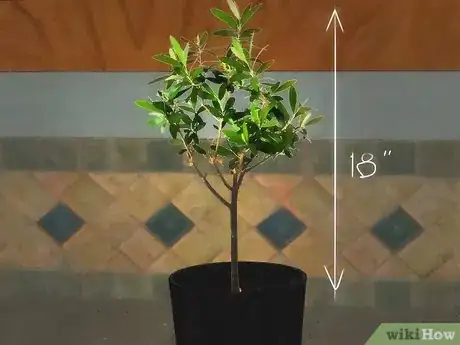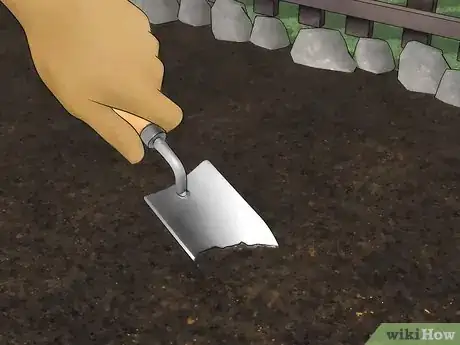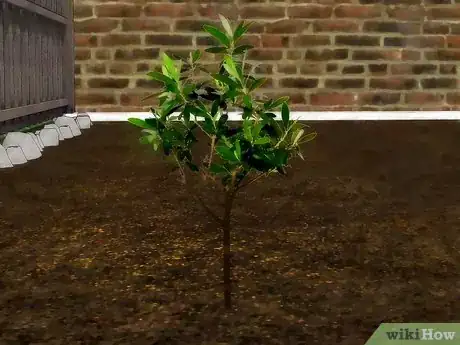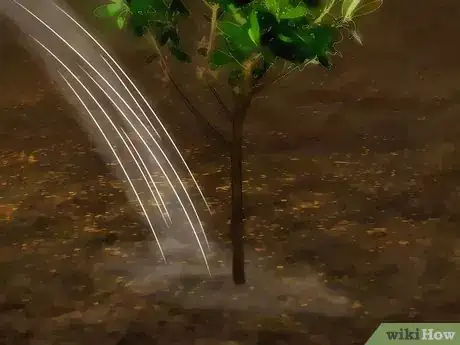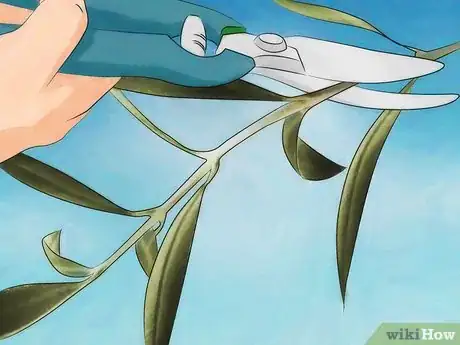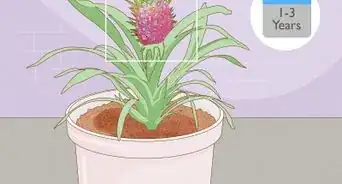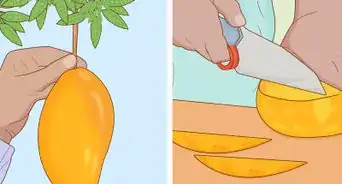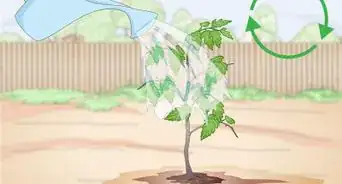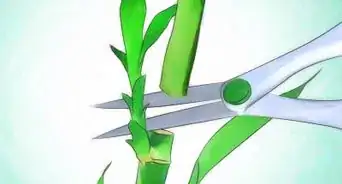This article was co-authored by Andrew Carberry, MPH. Andrew Carberry is a Food Systems Expert and the Senior Program Associate at the Wallace Centere at Winrock International in Little Rock, Arkansas. He has worked in food systems since 2008 and has experience working on farm-to-school projects, food safety programs, and working with local and state coalitions in Arkansas. He is a graduate of the College of William and Mary and holds a Masters degree in public health and nutrition from the University of Tennessee.
There are 7 references cited in this article, which can be found at the bottom of the page.
wikiHow marks an article as reader-approved once it receives enough positive feedback. In this case, 100% of readers who voted found the article helpful, earning it our reader-approved status.
This article has been viewed 328,217 times.
For most, olive trees conjure up ideas of vast fields in the Mediterranean, coupled with a blistering sun to help ripen the fruit. Despite this, olive trees can grow in most mildly warm climates, as long as the winter temps don't drop below freezing. Growing an olive tree from seed is great for ornamental purposes. The olives on a tree grown from seed will most likely be more like wild olives, which are much smaller than commercial named varieties. With some patience and tender loving care, you can have your own olive tree right at home.
Steps
Harvesting the Pit
-
1Determine the type of tree you want to grow. There are literally hundreds of olive tree varieties around the world. Some are similar with only slight differences in olive color and flavor. Others are extremely different and have growing preferences which impact the ripening time.
- For example, the four main types in California are: Mission, Manzanillo, Sevillano and Ascolano. Even though these are grown in the same state, the diverse climate, coupled with a particular olive strand, yields a range of results.
- Significantly research your location to determine which type of olive will prosper.
- Growing from seed, you will get more of a wild variety than any of the parent trees it came from.
-
2Gather olives. This may sound easy, but the fruit must be picked directly from the tree so the seed remains alive. Olive trees prosper in climate zones 8-11.[1] These areas have a subtropical climate and mild winters. Pick them in early autumn, after the fruits ripen and are green. Leave the black ones. Don't pick any off the ground and make sure the ones you choose don't have any holes from insects.
- Using olives purchased from a grocery store will not work. These have been processed for consumption which means they've been cooked. This process kills the seed inside the pit, so they are no longer viable. Raw olives from the produce section may be viable, though.
- If you don't have access to an olive tree, many large orchards will ship pits/seeds directly to you.
Advertisement -
3Place the olives in a bucket. Once you have the olives, gently smash the flesh with a hammer to loosen the fruit around the pit. Cover the crushed olives with warm water and soak them overnight. Stir the water every few hours or so. Jostling them will encourage the fruit to loosen further.
- If a hammer isn't available, use a wide knife and smash with the flat side.
- If you notice a few floating to the surface, gather these and discard. They are likely rotten.
-
4Drain the water. Gather the pits and use a scour pad to rub the excess skin off. This is the same pad you probably use on pots and pans. After you've rubbed the skin, thoroughly rinse the pits in warm water for several minutes.
- If a scour pad is not available, try sandpaper.
-
5Cut the ends of the pits. There is a blunt end and a pointy end on every olive pit. With a knife, nick the blunt end. Do not break through the hull completely or the seed will be useless. Instead, create a tiny hole about the size of a pen tip.
- Soak these for 24 hours in room temperature water.[2]
Sowing Olive Pits
-
1Fill a small pot with soil. Use a 3 inch pot for every seed. Fill them with well-draining soil. It should consist of one part coarse sand and one part seed compost. These items can be found at any gardening store. Add a little water so the soil mixture is moist, not muddy.
- You can use a larger pot if you prefer. You will be transplanting the seeds when they sprout and mature.
- Thoroughly mix the soil together using a spoon, stick or your hand.
-
2Plant the seeds. Sow the seed an inch or two deep in the soil. It's best to plant one seed per pot. This way, the seeds aren't battling over nutrients.[3]
- Plant several more seeds than you want trees. Olives have a low germination rate, even under the best conditions.
-
3Bag the pots. Place the pots inside a clear polythene bag. This will help maintain some moisture and work as a greenhouse of sorts. Keep the pot in a well-lit area that is warm. A windowsill is a terrific option, but keep in mind that direct sunlight can be harmful initially. If you use a bag, place the pot in indirect sunlight.
- Instead of using a bag, place the pot inside a propagator if one is available.
- Expect germination within a month.
-
4Water the seeds. You will want to maintain constant moisture in the top two inches of the soil. You can check this by sticking your finger in the soil occasionally. Only water if the top ¼ inch of the soil appears dry. Over-watering may create fungal and bacterial growth which will destroy the plant.
-
5Remove the pots from the bags once germination or sprouting begins. You can keep the pots in the windowsill or whatever warm area you've chosen until it's time to transplant the olive seedlings. Continue to water as normal.
Transplanting Outdoors
-
1Plant in the fall. August to September is ideal for most areas. This will allow the tree to get settled in the soil before frosty temperatures hit. Wait until the seedling is about 18 inches tall though.
- Because frost damage is a huge concern for these plants, wait until spring if your area experiences temperatures below 30°F (-1.1°C).
-
2Dig a hole. Choose a location that receives lots of direct sunlight to encourage an additional growth spurt. The hole will only need to be a few inches deep. A good rule of thumb is to make it a little deeper than the container the tree was initially grown in.[4]
- You can use a small shovel or your hand to dig the hole.
- The good thing about olive trees is that they can tolerate most soil types. This includes rocky or sandy soil. The only requirement is that it must have good drainage or they will slowly decline and die due to too much moisture. Poorly-drained soil conditions can lead to root disease such as Verticillium wilt or Phytopthora root rot. The area around the tree should never be muddy, just slightly moist.
-
3Plant the tree. Gently remove the tree, being cautious not to disturb the roots too much. Ensure the tree and the hole are well watered before planting. Place the tree in the hole, slightly higher than the ground and cover with one inch of soil from the area.
- Avoid using large amounts of organic soil mix, compost or fertilizer. This will create an artificial growing environment. You can start fertilizing the tree a year after planting[5]
- If you are planting multiple trees, they need to be at least three feet apart, and up to 28 feet (8.5 m) for larger varieties. Otherwise, they will compete for nutrients in the surrounding soil.
-
4Water as normal. The same rules apply when watering the trees outdoors. Check the area around the tree for moisture and water when the top ¼ inch is dry. Be sure not to over water. Mother nature will take over and the plant will flourish.
- Olive trees are quite tough, so they do not normally require any special care or watering during the colder months. However, if the climate in your area is very dry, water them as normal to maintain moisture in the upper levels of the soil.
-
5Expect fruit in 3 years. Remember that with hundreds of varieties, it's difficult to predict when the tree will begin producing fruit. Some, like Arbequina and Koroneiki will bear fruit around 3 years old. Others may take 5-12 years.[6]
-
6Prune the tree. Olives grow very slowly, so don't require much pruning. However, you can remove dead, diseased or dying branches, and remove branches growing low on the trunk. You can also thin out branches to allow light to reach the center of the tree.[7]
Expert Q&A
Did you know you can get expert answers for this article?
Unlock expert answers by supporting wikiHow
-
QuestionShould I plant the olive seed in the same way if I want to bonsai it?
 Andrew Carberry, MPHAndrew Carberry is a Food Systems Expert and the Senior Program Associate at the Wallace Centere at Winrock International in Little Rock, Arkansas. He has worked in food systems since 2008 and has experience working on farm-to-school projects, food safety programs, and working with local and state coalitions in Arkansas. He is a graduate of the College of William and Mary and holds a Masters degree in public health and nutrition from the University of Tennessee.
Andrew Carberry, MPHAndrew Carberry is a Food Systems Expert and the Senior Program Associate at the Wallace Centere at Winrock International in Little Rock, Arkansas. He has worked in food systems since 2008 and has experience working on farm-to-school projects, food safety programs, and working with local and state coalitions in Arkansas. He is a graduate of the College of William and Mary and holds a Masters degree in public health and nutrition from the University of Tennessee.
Food Systems Expert
-
QuestionAbout how much dirt does the pit need in the pot?
 Andrew Carberry, MPHAndrew Carberry is a Food Systems Expert and the Senior Program Associate at the Wallace Centere at Winrock International in Little Rock, Arkansas. He has worked in food systems since 2008 and has experience working on farm-to-school projects, food safety programs, and working with local and state coalitions in Arkansas. He is a graduate of the College of William and Mary and holds a Masters degree in public health and nutrition from the University of Tennessee.
Andrew Carberry, MPHAndrew Carberry is a Food Systems Expert and the Senior Program Associate at the Wallace Centere at Winrock International in Little Rock, Arkansas. He has worked in food systems since 2008 and has experience working on farm-to-school projects, food safety programs, and working with local and state coalitions in Arkansas. He is a graduate of the College of William and Mary and holds a Masters degree in public health and nutrition from the University of Tennessee.
Food Systems Expert
-
QuestionHow much water does a growing tree need?
 Community AnswerJust make sure the top layer of the soil is always moist but not muddy. Constantly wet soil can lead to root rot and fungal infections and attacks on your tree. If you live in a hot dry climate, make sure you water regularly, and do not let the soil go dry.
Community AnswerJust make sure the top layer of the soil is always moist but not muddy. Constantly wet soil can lead to root rot and fungal infections and attacks on your tree. If you live in a hot dry climate, make sure you water regularly, and do not let the soil go dry.
References
- ↑ http://www.oliveoilsource.com/page/site-selection
- ↑ http://www.gardeningknowhow.com/edible/fruits/olive/how-to-plant-olive-pits.htm
- ↑ https://www.youtube.com/watch?v=TjujmM0R4S8
- ↑ http://cesonoma.ucanr.edu/files/27176.pdf
- ↑ http://www.oliveoilsource.com/page/olive-tree-planting
- ↑ http://olivetreegrowers.com/faq.php
- ↑ https://www.rhs.org.uk/advice/profile?pid=138
About This Article
To grow an olive tree from a pit, harvest ripe green olives directly from an olive tree in early autumn. Gently crush the olives with a hammer to loosen the fruit around the seeds, then soak the olives in a bucket of warm water overnight. Drain the water, remove the pits from the olives, and scrub the pits with a scouring pad to remove the remaining fruit. Nick the blunt end of each pit with a knife, then soak the pits in room-temperature water for 24 hours. Start each pit in a 3-inch (7.6 cm) clay pot filled with 1 part coarse sand and 1 part seed compost. Plant the seeds 1-2 inches (2.5-5 cm) deep in the soil and place each pot in a closed, transparent polythene bag. Put the pots in a well-lit area and water them any time the top ¼ inch (.6 cm) of soil dries out. Take the pots out of the bags once the pits start to sprout. When the seedlings reach about 18 inches (46 cm) tall, transplant them outside in early fall. Plant them in a spot with well-draining soil and lots of direct sunlight. It will take about 3 years for your olive trees to bear fruit. For more tips from our Gardening reviewer, including how to transplant your olive tree outdoors, keep reading!

